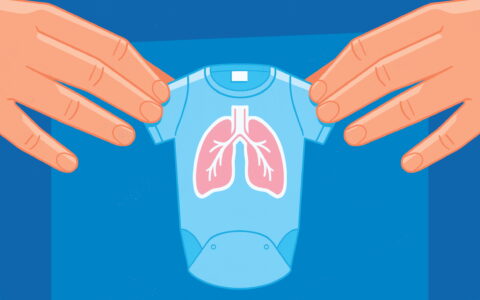Neutrophil count has long been a barometer of infection, largely based on the experience of the oncology community, in which 13-21 percent of patients with febrile neutropenia and solid tumors are found to have bacteremia. However, the risk of infection in children with chronic neutropenia who do not have cancer is unknown.
The potential for differential infectious risk has led researchers at Monroe Carell Jr. Children’s Hospital at Vanderbilt to investigate a bifurcated treatment approach for children with and without cancer.
Fourth-year Vanderbilt medical student Anna Matthews worked with co-principal investigators, pediatric hematology-oncology specialists Jim Connelly, M.D., and Adam Esbenshade, M.D., to probe the incidence of bacteremia among children with fever at the Monroe Carell ED. Matthews presented their preliminary findings at the American Society of Pediatric Hematology/Oncology conference in May 2023, where it was awarded best plenary hematology abstract.
Their research tested the hypotheses that the risk of invasive bacterial infections is low in the non-oncologic population, and that historically aggressive treatment in febrile patients may not be appropriate for those with neutropenia.
“If a child’s neutrophil count is less than 500, they’re almost always admitted and put on IV antibiotics,” Connelly said. “This is a practice most institutions have adapted, right or wrong, because there is a lack of evidence-based recommendations on how to manage fever in children who don’t have cancer but have chronic neutropenia.”
Little Bacteremia Found
The team studied records of 101 children who had histories of non-oncologic neutropenia and presented at the ED between 2007 and 2022. There were 67 patients who had at least one febrile episode, with 217 febrile episodes in all.
“Most patients in our study population had very low rates of invasive bacterial infections. In fact, they were on par with general pediatric patients.”
Cultures showed that only 1 percent of these children had bacteremia and only 5 percent had invasive bacterial infections. The majority of cases were secondary to a viral infection, an indication that does not require antibiotics and only rarely a hospital admission.
“Most patients in our study population had very low rates of invasive bacterial infections. In fact, they were on par with general pediatric patients who show up to an emergency department,” Matthews said.
Aggressive Management
The urge to hospitalize these febrile patients is understandable, Connelly said.
“It is very difficult for even experienced physicians to look at these febrile patients and determine whether they have an invasive bacterial infection or not,” he said. “With 24 to 48 hours to get blood culture results, conservative management has been the response until lab testing returns to rule out bacteremia.”
Yet, repeating this pattern of IV antibiotics and hospital admission raises issues ranging from exposing the child to hospital-acquired infections to contributing to global antibiotic resistance.
“In our study, we found that around 85 percent of the patients with neutrophil counts under 500 cells/µL had been placed on antibiotics and admitted,” Matthews said. “Yet, we did not find the absolute neutrophil count to be associated with invasive bacterial infection.”
Impact on Hospital Protocols
The team now plans to collect similar data at multiple institutions to create a risk model that would encompass selected clinical or laboratory features and patient history to guide treatment upon ED presentation.
They also plan to develop a comprehensive epidemiology for these patients, hoping to learn what infections are causing their fever, how their cases are being managed, and whether there are better predictive measures for bacterial infection than neutrophil count alone.
“If a child has a fever but a low-risk form of neutropenia, the recommendation might be to stay at home or only be seen in an outpatient clinic instead of being admitted and given an antibiotic,” Connelly said.
In parallel, they are working with Vanderbilt colleague and hematologist Christine Smith, M.D., on a quality improvement project to include a fever management plan in the EHR for every non-oncologic chronic neutropenia patient.
“I’ve dealt with the neutropenia population for a long time, and a lot of families say the worst thing about their disease is that they have to go to the ED six times a year and get admitted four times a year,” Connelly said. “We hope our work may prove that these historically routine interventions are unnecessary.”





